HOME • HISTORY • COMMODITIES • CUSTOMERS • RUM & WHISKEY • SLAVERY • WAR • ACCOUNTS • MAPS • ESSAYS
|
____________ Customers 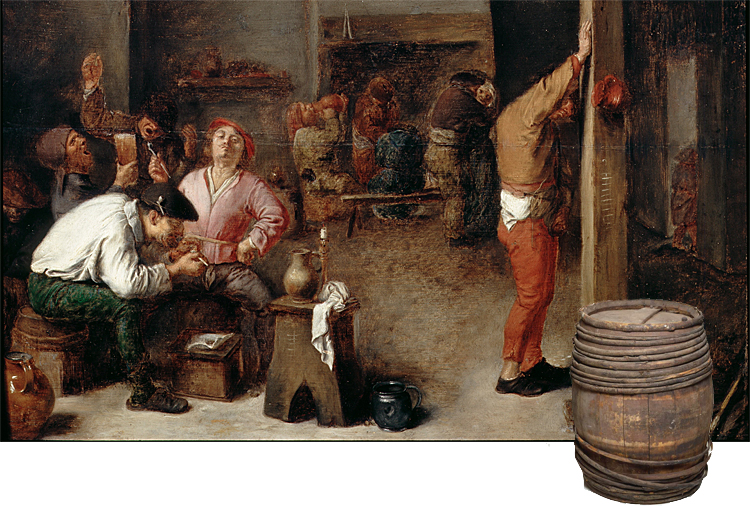 The Dupui Ledger lists 167 customers that had secured credit arrangements; additionally, another 212 individuals are cited within the ledger -- in total, a robust community of at least 379 souls. Let's meet some of the patrons. |
|||
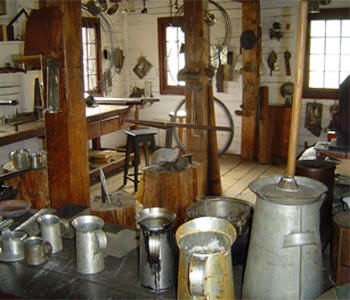 |
WHERE'S MY FLAGON? A broad category of goods is not
represented in the Dupui ledger, namely pails, buckets, pots,
pans, tubs, flagons, lanterns, teapots, pitchers, spoons ladles,
funnels or plates -- all of these items were the hand-wrought
work of a tinsmith. Who was this first area merchant?
What do we know about him? |
||
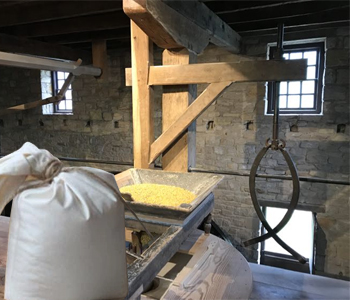 |
THE GRIST-MILLER "...a man of powerful frame and great muscular strength, being able to carry four three-bushel bags of wheat from the threshing floor to the granary on the attic of the house, carrying one bag upon each shoulder – one thrown across these in front, and one in like manner behind.” Who was this man? How was he involved in the 1737 Walking Purchase? |
||
 |
A CARRIAGE FOR THE DEAD: THE COFFIN-MAKER £0:6:0 -- "By making a Coffin for the Negro Wench" One man had the grim task of building coffins for the dead. Death on the frontier could stem from numerous causes: snakebite, the pox, Indian predations... even the joy of birthing a child was fraught with risk. |
||
 |
"AT 6 PENCE PER YD." -- They say that real colonial women didn't weave cloth. But is that true? What does the Dupui general store ledger tell us? Was weaving a cottage craft only practiced by men? ...and what was being woven? Blankets? Material for items such as pouches?
|
||
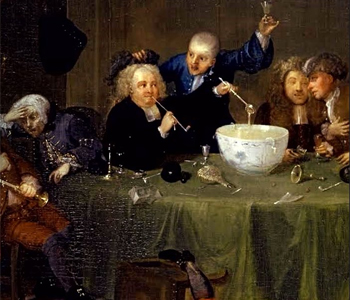 |
"TO A QUART OF RUM YOUR WIFE HAD" -- Mead, punch, rum, whiskey?
Colonials loved their drink, and taverns were often the ideal
place to meet in good company. So when did this area see
it's first tavern established? Did it have a license, or
were such trifling matters ignored for the sake of the common
good? |
||
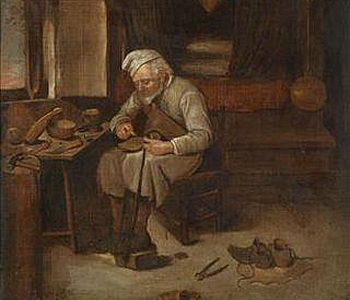 |
"BY MAKING 4 PAIR OF SMALL SHOES" -- Upper Leather? Soles? The shoemaker's craft relied upon different types of leather and fabrics. Did Dupui's general store supply all of these components? ...and were new shoes routinely ordered or were they worn until they fell apart and then mended? What about boots? What can the ledger tell us? |
||
 |
"BY 700 & 1 LBS. OF BARREL STAVES" -- Barrels were in constant use for commodities such as rum, flour, tare, and midlins. At issue, did the man that produced the staves also manufacture the barrels? How were these items delivered? What type of road network was available? What if a customer's homestead wasn't along a road? How much might a loaded barrel weigh? |
||
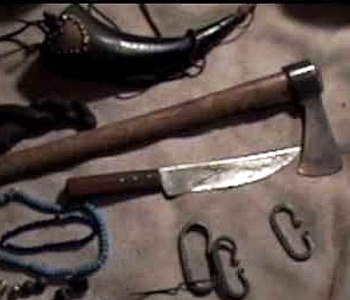 |
FLINTS, NONESOPRITTY & LOOKING GLASSES -- THE INDIAN TRADER Glass beads in exchange for furs? Is this what Indian trade on the frontier was really like? What items did our area Indian traders actually carry as a matter of course? Looking glasses, knives, flints, rum, warm fabrics, pretty trims? Did they sell powder and shot or bars of lead? What can the ledger tell us? |
||
 |
"BY 4 DAYS WORK AT HARVEST BY YOUR DAUGHTER CATHERINE" -- THE FARMER A family affair? Sure enough, and women had their fair share of work, especially during harvest season. Some settlers would even settle their accounts at Depui's store by having their wives and daughters loaned out to him for work (raking oats or attending to the wheat harvest). But what other types of work did women perform? |
||
 |
"BY 1 DAYS KILLING HOGS" --
Gotta eat. But did our area have its own dedicated butcher, or did all settlers attend to their own butchering? Besides pork, what else was routinely on the menu? Beef? Bear? Deer? What about turkey, chicken, or ducks? Were any such sales recorded in the ledger? Perhaps veal? Let's find out... |
||
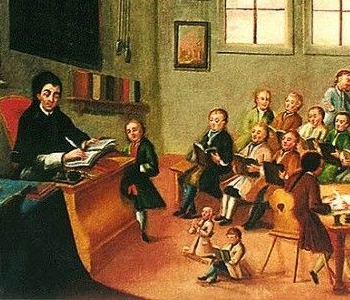 |
GOEDEMORGEN STUDENTEN! -- Gotta learn. But how was education
managed on the frontier? Did our area have its own
schoolmaster from the earliest days of settlement, or was this a
later development? What percentage of the population could
only write their "mark" because they were illiterate? Just
how bad was colonial handwriting? |
||
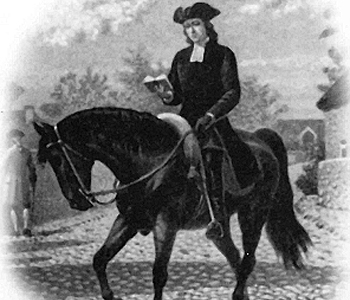 |
CIRCUIT RIDER -- Gotta pray. Moravians, Lutherans, members of the Reformed Dutch Church -- they all had their ministers. But how often did these ministers appear in the ledger? Did they have their own accounts? Did they own their own houses and horses? How well were they paid? Any reluctance in paying for their services? Let's find out. |
||
 |
"BY SPINNING 28 LBS. OF THREAD"
-- Gotta spin. Thread was essential for sewing and the fashioning of garments, but thread was readily available at Depui's store. So how much spinning was actually done at home? Did we have an area spinner, or was every household engaged in this activity? How often were skeins of thread sold? Only in the early settlement years? |
||
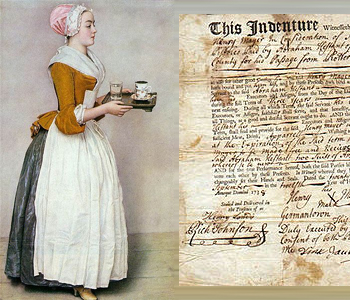 |
DUTY FOR A TERM -- Indentured servitude. What was it really? Was it akin to a period of slavery for white people? Did the frontier actually have indentured servants? If so, were they mostly women? To what type of duties were they assigned? For how long of a term did they serve? Did merchant Depui have his own indentured servant? |
||
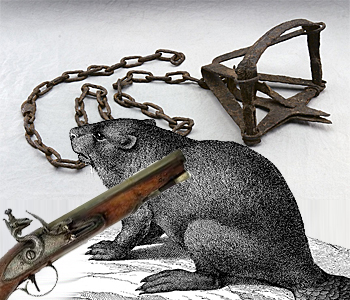 |
SKINS & FURS -- Skins and furs of fox, raccoon, deer, beaver, wolf, fisher, otter, bear, muskrat, boar, and elk served to help settle settlers' accounts at Depui's store. ... and who even knew that we had elk in our county?!! Hunting and trapping quite clearly was a major part of frontier life in this area, but was it lucrative? Let's find out. |
||
 |
FORGING THE FUTURE -- Gotta pound that iron. Yes, from the earliest days we did have area blacksmiths. Will their ledger accounts at Depui's store tell us more about these men? Are there other sources that can tell us a bit more? Were their iron purchases sizable? Besides horeshoes and plows, what else did they fashion? |
||
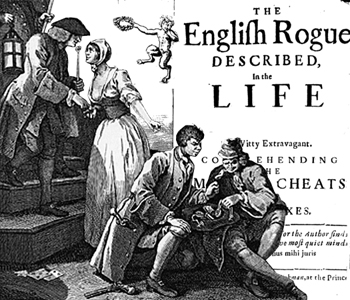 |
NOT ALWAYS SMOOTH SAILING -- Gotta go rogue. An intriguing ledger payment entry: "By Expenses and Trouble in the House." It raises the question, how often did real trouble emerge? Were debts always settled, or was recourse to the courts occasionally necessary on the frontier? How often were warrants actually served on people? |
||
 |
"TO THE REMAINS OF A PAIR OF STOCKINS" -- THE WOMEN Mending. Frugality. Buying the "remains" of stockings, of muslin, of shalloon, of a deer skin, or of a quart of rum. This was all part and parcel of frontier life. Meticulously thrifty. At times, spartan, ...and women often took the lead in such matters. So how dire was their life? |
||